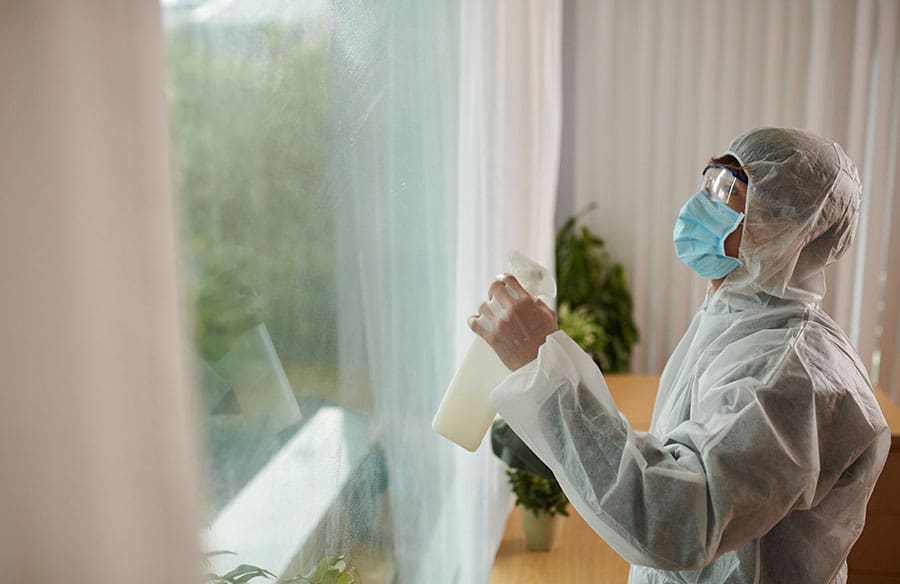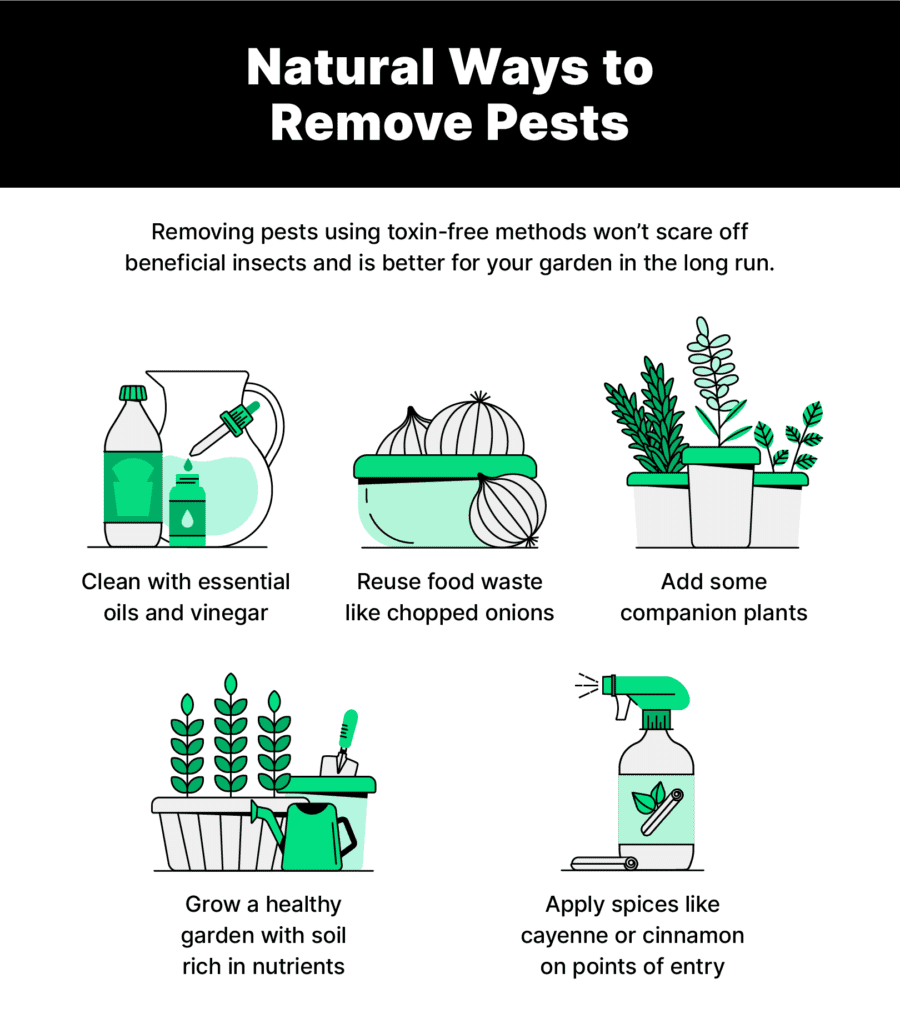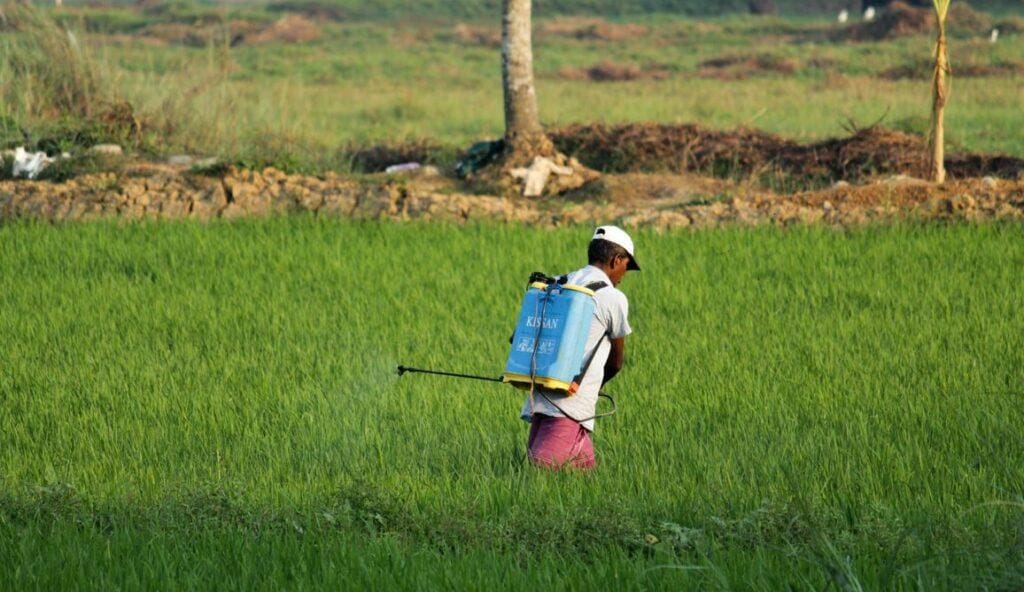In this article, you will discover the exciting possibilities that lie ahead for eco-friendly pest control solutions. With a focus on sustainability and natural alternatives, the future of pest control is looking more promising than ever. From innovative technologies to environmentally conscious practices, this article will explore how we can continue to combat pests while minimizing our impact on the planet. So, get ready to delve into the world of eco-friendly pest control solutions and discover a future where pests are managed with care and consideration for our environment.
Advances in Eco-Friendly Pest Control
Introduction to eco-friendly pest control
As awareness grows regarding the impact of traditional pest control methods on the environment and human health, the demand for eco-friendly pest control solutions is on the rise. Eco-friendly pest control focuses on minimizing the use of harmful chemicals and instead utilizes sustainable and natural alternatives to manage pest infestations. This approach aims to strike a balance between effective pest control and the preservation of the ecosystem.
The importance of eco-friendly solutions
Eco-friendly pest control solutions offer numerous benefits both for individuals and the planet. Firstly, they reduce the risk of toxic exposure to humans, pets, and non-targeted organisms. By using non-toxic alternatives, we can protect our health and minimize the adverse effects on the environment. Additionally, eco-friendly pest control helps in preserving biodiversity, as it does not harm beneficial insects and organisms. This approach also promotes sustainability by using renewable and natural resources.
Current challenges in pest control
Traditional pest control methods often rely heavily on the use of chemical pesticides, which can have detrimental effects on the environment. Pesticides have been linked to the decline of bee populations, water contamination, and soil degradation. Moreover, pests can develop resistance to conventional chemical treatments, making them less effective over time. These challenges necessitate the development of eco-friendly pest control solutions that are both effective and sustainable.
Emerging technologies and trends
Advances in technology have paved the way for innovative and eco-friendly pest control solutions. The following sections will explore the various approaches and methods that utilize biological control, plant-based pesticides, smart pest control systems, precision pest control methods, chemical-free alternatives, digital tools, sustainable practices, advancements in pest repellents, and the role of data and research in shaping the future of eco-friendly pest control.
Biological Pest Control
Overview of biological pest control
Biological pest control harnesses the natural biological interactions between organisms to manage pest populations. It involves introducing beneficial insects, predators, or pathogens that feed on or parasitize the target pest species. The goal is to establish a natural balance in the ecosystem, reducing pest populations without the need for chemical interventions.
Beneficial insects and organisms
Many insects and organisms play a crucial role in controlling pest populations. Ladybugs, for example, are voracious predators of aphids, while praying mantises dine on various insects. Nematodes, microscopic worms, can be used to combat soil-dwelling pests. By attracting and introducing these beneficial organisms to the environment, we can maintain pest control without harming the ecosystem.
Genetically modified organisms (GMOs)
Genetic engineering technologies have opened up new possibilities in pest control. Scientists can now modify the DNA of certain organisms to enhance their natural pest-fighting capabilities. For example, genetically modified mosquitoes have been developed to disrupt the breeding cycles of disease-carrying mosquitoes. However, the use of GMOs in pest control raises ethical and regulatory concerns that need to be carefully addressed.
Advantages and limitations of biological control
One of the major advantages of biological control is its sustainability. Instead of relying on chemical pesticides, the use of beneficial organisms can provide long-term pest management solutions. It is also environmentally friendly, as it reduces the need for synthetic chemicals and minimizes the risk of pesticide residues. However, biological control methods may not always be suitable for all pest species or environments, and their effectiveness can vary depending on various factors such as climate and ecosystem dynamics.

Plant-Based Pest Control
Introduction to plant-based pesticides
Plant-based pesticides, also known as botanical or natural pesticides, are derived from plant sources such as seeds, leaves, or essential oils. These products utilize the natural defensive properties of plants to repel or kill pests. Plant-based pesticides are considered an eco-friendly alternative to synthetic chemical pesticides, as they are generally safer for humans and the environment.
Natural repellents and deterrents
Certain plants possess natural repellent properties that deter pests. For example, neem oil is derived from the neem tree and is effective against a wide range of insects. Garlic, chili peppers, and other aromatic plants can also be used as natural deterrents. These natural repellents work by disrupting pests’ feeding, mating, or sensory instincts, making the environment less favorable for their survival.
Essential oils for pest control
Essential oils extracted from plants have gained popularity as natural pest control agents. Oils like citronella, peppermint, and tea tree are known for their insect-repelling properties. These oils can be applied directly or used in various formulations such as sprays or diffusers to deter pests. However, it is important to note that essential oils should be used with caution, as they can be harmful to certain animals or trigger allergic reactions in some individuals.
Effectiveness and safety considerations
While plant-based pest control solutions are generally considered safe and eco-friendly, their effectiveness can vary depending on factors like pest species, infestation severity, and application methods. It is crucial to follow the recommended guidelines and instructions when using plant-based pesticides to ensure their optimum efficacy and minimize any potential risks. Additionally, it is advisable to choose products that have undergone rigorous testing and have a proven track record of safety and effectiveness.
Smart Pest Control Systems
Internet of Things (IoT) in pest control
The emergence of the Internet of Things (IoT) has revolutionized many industries, and pest control is no exception. IoT refers to the network of interconnected devices that can collect and exchange data. In the context of pest control, IoT technology can be utilized to create smart pest control systems that enable real-time monitoring, data analysis, and remote management of pest-related issues.
Automated monitoring and detection
Smart pest control systems leverage sensors, cameras, and other advanced technologies to detect and monitor pest activity. These systems can continuously monitor parameters like temperature, humidity, and movement to detect signs of pest infestations. Automated alerts can be sent to homeowners or pest control professionals, enabling timely intervention and preventing infestations from spiraling out of control.
Remote control and management
With smart pest control systems, users can remotely control and manage pest control devices. For example, automated traps or bait stations can be activated or deactivated from a smartphone or computer. This remote accessibility not only enhances convenience but also ensures prompt actions and reduces the need for physical visits by pest control professionals.
Integration with other smart home devices
Smart pest control systems can be integrated with other smart home devices, creating a seamless and comprehensive solution. For instance, integrating pest control systems with smart sprinkler systems can target pests while watering the garden simultaneously. This synergy of devices optimizes pest control efforts and enhances overall home automation.

Precision Pest Control Methods
Targeted spraying techniques
Precision pest control methods involve the targeted application of pesticides to minimize their impact on non-targeted organisms and the environment. Instead of blanket spraying, these techniques utilize accurate delivery systems such as drones or sprayers equipped with GPS and mapping technologies. By precisely targeting the affected areas, the use of pesticides can be minimized, making the process more efficient and eco-friendly.
Fogging and misting technologies
Fogging and misting technologies disperse pesticide solutions in the form of fine particles or mist. This method ensures uniform coverage and effective penetration into difficult-to-reach areas. These technologies utilize low-volume applications to reduce pesticide usage while increasing the overall efficiency of pest control.
Trap and bait systems
Traps and bait systems are popular precision pest control methods, especially for targeting specific pest species. These systems use attractants or pheromones to lure pests into traps or baits, allowing for targeted control without the need for widespread pesticide applications. By selectively targeting the desired pests, these methods minimize the impact on beneficial insects and minimize pesticide residues in the environment.
Use of artificial intelligence (AI)
The integration of artificial intelligence (AI) in pest control allows for more accurate and efficient pest identification, monitoring, and treatment. AI algorithms can analyze vast amounts of data, including pest behavior, environmental factors, and historical patterns, to provide insights and recommendations. The use of AI in pest control streamlines processes, improves decision-making, and reduces the reliance on chemical treatments.
Chemical-Free Pest Control
Non-toxic pest control alternatives
Chemical-free pest control alternatives have gained traction as people seek environmentally friendly options. Methods such as heat treatments, steam technology, and physical barriers offer effective pest control without relying on chemical pesticides. Heat treatments involve using controlled temperatures to eliminate pests, while steam technology utilizes high-temperature steam to kill pests and their eggs. Physical barriers, such as screens or caulking, create a physical barrier to prevent pests from entering buildings or gardens.
Heat treatments and steam technology
Heat treatments and steam technology have shown promising results in eradicating pests without the use of chemical pesticides. Both methods rely on high temperatures to kill pests at various life stages. Heat treatments, usually administered by professionals, involve raising the temperature of infested areas to levels that are lethal to pests. Steam technology utilizes steam devices to directly apply high-temperature steam to pests and infested areas.
Physical barriers and exclusion methods
Physical barriers and exclusion methods involve creating physical barriers to prevent pests from entering buildings or gardens. This can include mesh screens on windows, door sweeps to seal gaps, or the use of caulk to seal cracks in foundations. By preventing pests from entering the premises in the first place, chemical pesticide usage can be significantly reduced, resulting in a safer and more environmentally friendly pest control approach.
Advantages and considerations
Chemical-free pest control methods offer several advantages, including reduced risk of chemical exposure, minimal impact on non-targeted organisms, and lower environmental pollution. These methods are particularly suitable for sensitive areas such as homes with children or pets, organic gardens, or environmentally protected areas. However, it is important to carefully consider the specific pest species, infestation severity, and the compatibility of these methods with the desired outcomes to ensure their effectiveness.

Digital Pest Control Tools
Mobile applications for pest identification
Mobile applications designed for pest identification have become valuable tools for homeowners and professionals alike. These apps utilize image recognition technology and comprehensive databases to help users identify pests accurately. By simply taking a photo and inputting relevant information, users can access detailed species information, potential risks, and recommended control methods. This empowers users to make informed decisions and take appropriate action against pests.
Online pest control resources
The internet offers a vast array of online resources that provide valuable information on pest control methods, prevention tips, and sustainable practices. Websites, blogs, and online forums contribute to a global knowledge-sharing platform where professionals and individuals can exchange ideas, seek advice, and stay updated on the latest trends in eco-friendly pest control. These resources not only educate users but also promote sustainable practices and encourage the adoption of environmentally friendly pest control solutions.
Virtual reality (VR) training for pest professionals
Virtual reality (VR) technology is increasingly being utilized for training pest control professionals. VR simulations provide a realistic and immersive environment where professionals can practice pest identification, treatment techniques, and safety protocols. This technology allows for interactive and hands-on training, enhancing the skills and expertise of pest control professionals while minimizing the use of real-life resources and potential risks.
Data-driven analytics and predictive models
The collection and analysis of pest-related data are invaluable for developing effective pest control strategies and predicting future infestations. Data-driven analytics and predictive models utilize historical and real-time data to identify patterns, anticipate pest outbreaks, and optimize pest control measures. By understanding pest behavior and environmental factors, these tools enable proactive and targeted pest management, resulting in more efficient and sustainable pest control practices.
Sustainable Pest Control Practices
Integrated Pest Management (IPM) approaches
Integrated Pest Management (IPM) is a holistic approach that combines various pest control strategies to effectively manage pests while minimizing risks to humans and the environment. IPM approaches focus on prevention, monitoring, pest identification, and the use of multiple control methods. By employing a combination of cultural, biological, and chemical control measures, IPM practices aim to maintain pest populations at acceptable levels while reducing reliance on chemical pesticides.
Education and awareness campaigns
Education and awareness play crucial roles in promoting sustainable pest control practices. By educating individuals about the importance of eco-friendly pest control and providing information on prevention, identification, and control methods, awareness campaigns empower people to make informed decisions and take necessary actions. These initiatives can be carried out through schools, community organizations, online platforms, or partnerships with pest control professionals.
Community involvement and partnerships
Engaging communities and establishing partnerships among various stakeholders are essential for achieving long-term sustainability in pest control. By involving homeowners, businesses, local governments, and pest control professionals, communities can develop comprehensive pest management plans tailored to their specific needs. Collaborative efforts can include sharing resources, expertise, and best practices, as well as organizing community-wide events and initiatives to promote eco-friendly pest control practices.
Long-term sustainability considerations
To ensure long-term sustainability in pest control, it is essential to consider the environmental, social, and economic aspects. This includes evaluating the lifecycle impact of pest control products and technologies, promoting responsible and ethical practices, and supporting research and innovation for continuous improvement. Additionally, fostering a culture of sustainability through policies, regulations, and incentives can encourage the adoption of eco-friendly pest control practices on a larger scale.

Advancements in Pest Repellents
Ultrasonic and electromagnetic repellents
Ultrasonic and electromagnetic repellents use sound or electromagnetic waves to deter pests. These devices emit high-frequency or electromagnetic signals that are undetectable to humans but purportedly repel pests. Ultrasonic repellents are commonly used for deterring rodents, while electromagnetic repellents target pests like ants and cockroaches. However, the effectiveness of these repellents can vary, and further research is needed to determine their long-term impact on pests and the environment.
Nanotechnology-based repellents
Nanotechnology has opened up new possibilities for the development of innovative pest repellents. By manipulating materials at the nanoscale, researchers have created repellents with enhanced properties, such as improved stability, controlled release, and increased efficacy. Nanotechnology-based repellents offer potential solutions for targeted and sustainable pest control, although their long-term effects and regulatory considerations need to be thoroughly assessed.
Repellents for specific pests
Advancements in research have led to the development of repellents specifically targeted at certain pest species. For example, mosquito repellents are continually being improved to provide longer-lasting protection against mosquito-borne diseases. Similarly, bed bug repellents are being developed to combat the resurgence of bed bug infestations. These pest-specific repellents offer tailored solutions that contribute to effective pest management while minimizing the need for broad-spectrum chemical pesticides.
Effectiveness and consumer adoption
The effectiveness of pest repellents can vary depending on factors such as pest species, application methods, and environmental conditions. While some repellents have proven to be effective against certain pests, others may have limited efficacy. Furthermore, the adoption of repellents by consumers can be influenced by factors such as product availability, affordability, ease of use, and perceived safety. Ongoing research and development efforts are essential to improve the effectiveness and consumer adoption of eco-friendly pest repellents.
The Role of Data and Research
Collecting and analyzing pest data
Accurate and comprehensive data collection plays a crucial role in understanding pest behavior, prevalence, and trends. Pest control professionals, researchers, and authorities collect data on factors such as pest species, infestation severity, treatment outcomes, and environmental conditions. This data provides valuable insights into the effectiveness of different pest control methods, helps identify emerging pest threats, and guides the development of sustainable pest control strategies.
Big data and machine learning in pest control
The use of big data analytics and machine learning algorithms has the potential to revolutionize pest control practices. By analyzing vast amounts of data, including pest behavior, weather patterns, and treatment outcomes, machine learning algorithms can identify patterns, predict pest outbreaks, and optimize control strategies. This data-driven approach enables more precise and efficient pest control, reducing the reliance on chemical pesticides and minimizing the impact on the environment.
Scientific research and innovation
Scientific research and innovation are essential for the advancement of eco-friendly pest control solutions. Researchers are constantly exploring new techniques, studying pest behavior, and evaluating the effectiveness of alternative control methods. This ongoing research fosters innovation, leading to the development of safer and more sustainable pest control products and practices.
Collaboration and knowledge sharing
Collaboration and knowledge sharing among researchers, pest control professionals, and policymakers are vital for driving advancements in eco-friendly pest control. Sharing research findings, best practices, and success stories contributes to a collective understanding of sustainable pest control strategies. Collaborative efforts can also lead to the development of global guidelines and standards, helping to promote continuous improvement and the adoption of eco-friendly pest control practices on a larger scale.
In conclusion, the future of eco-friendly pest control is marked by advancements in various areas, including biological control, plant-based pesticides, smart pest control systems, precision pest control methods, chemical-free alternatives, digital tools, sustainable practices, advancements in pest repellents, and the role of data and research. These advancements offer promising solutions to effectively manage pest infestations while minimizing harm to the environment, non-targeted organisms, and human health. As awareness and demand for eco-friendly pest control continue to grow, the development and adoption of these solutions will play a crucial role in shaping a more sustainable and harmonious coexistence with pests.


I am Randy, the author behind PestControld.com. Drawing from decades of experience, I aim to provide valuable insights, expert advice, and practical recommendations to help you make informed decisions when assessing viable pest control solutions.